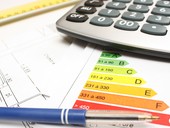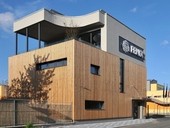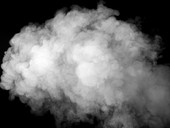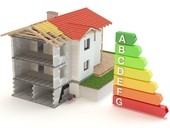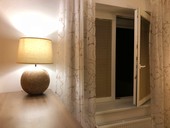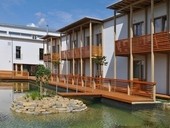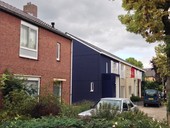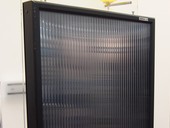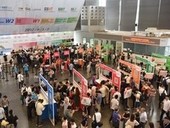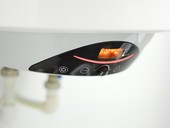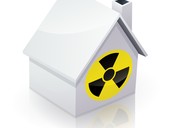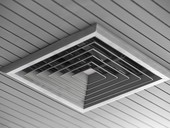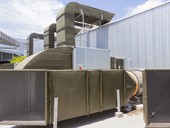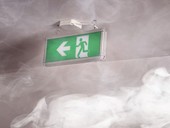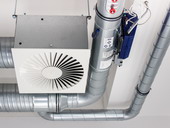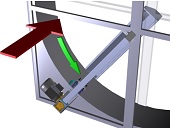The methodology for determining energy-neutral or energy-zero houses is different at national levels. The interest in the realization of such houses is not only influenced by the methodology but also by the market conditions in the area of moving surplus energy production from one object to another. This is an economically disadvantageous purchase price when delivering to the network. If the existing conditions in the Czech Republic are not changed, the implementation of energy-zero houses for investors will not be interesting and the potential for reduction of CO2 production will not be utilized.
Archiv článků od 22.5.2017 do 5.11.2018
The article contains a summary of energy consumption, a comparison with the calculation assumptions in a particular administrative building. The object is designed with minimal energy consumption and the goal is to achieve the highest degree of energy independence using photovoltaics and battery storage. The actual course of measured energy consumption, the overall assessment for the past period, the monthly summaries for the building as a whole and the individual sub-measured energy consumption are given. The aim is to bring the issue to the professional public and to indicate the path to the solution.
The notion of a nearly zero building, usually NZEB or nZEB, is no longer a novelty. This energy standard was introduced in 2016 and is gradually expanding into family houses. There are legislation, standards, but little has been gained. That's why the authors analyzed 130 already existing family houses with different heat sources. The result is an assessment of the influence of different heat sources on the energy intensity of homes and therefore an orientation aid for decision-makers of future builders.
The measurement of carbon dioxide concentration was made in my bedroom in February 2018 within one week. CO2 concentration during the night is evaluated under different ventilation modes. The results show a significant effect of ventilation on air quality. They prove that only natural ventilation through tight windows in current developmental residential buildings is inadequate.
In residential buildings, the quality of the indoor environment can be verified by the satisfaction rates of the people who live in them. One of the forms that can provide the necessary information is a subjective assessment. This form of survey was carried out with residents of the passive apartment building for seniors in Modřice. There were 25 women and 12 men of an average age of 77 years participating in the survey. The survey proved that seniors were able and willing to accept the terms of passive houses.
The paper describes actual trends in serial deep energy retrofitting of buildings in the Netherlands. A set of photographs presents several Dutch pilot projects of energy retrofitting of post-war family houses in Heerlen, Melick and Soersterberg to net zero energy level and of one multifamily residential building in Arnhem to nearly zero energy level. The retrofitting projects were made utilizing prefabricated thermal insulation wall modules with timber structural system (that included new windows) and prefabricated roof panels. All presented projects also featured replacement of energy sources and in case of the family houses also installations of photovoltaic systems replacing roof tiles.
Solar air collectors can provide partial coverage of the heat demand for building heating. On the energy model of a family house, an annual heat supply for heating for different uses of air collector systems was examined. The analysis shows that, as opposed to the use of a ventilating unit with recuperation, the air solar collectors do not provide savings due to low solar gains and short operating hours in the winter. The combination of the air collectors with the regenerative unit does not bring a significant decrease in the energy requirement compared with the regenerative unit itself, as the combined efficiency of both devices is reduced.
The article deals with the economic assessment of energy saving measures as a further continuation of the topic of reconstruction of HVAC systems in apartment buildings. Selection of economical lifespan for selected elements and functional parts with preventive maintenance costs is provided. Finally, an example of the apartment building evaluation is given.
The article analyses the impact of the new atomic law and its implementing decree on the design of radon preventive and remedial measures in residential buildings. The relationship between the newly introduced reference level and optimisation of the design, that gains importance, is explained. The article also discusses reasons that speak against the provision of the new law that radon index of the building site need not be determined, when a preventive measure based on soil ventilation is being designed.
The article looks at the current building ventilation paradigm and offers one of the perspectives on possible future solutions. It discusses the benefits and limitations of current systems to replace the entire volume of air in the room, and offers a possible solution to overcome these limits. It further develops the theme of the future in advanced air distribution – a local and personalized solution for the supply and removal of ventilation air. It points to the possible benefits, savings and limits of today's highly discussed solutions that are being offered as an add-on or alternative to current systems.
By introducing the Eurovent regulation for air handling units, the higher requirements for ventilation designers were brought. However the effect of the high efficient AHU can be easily set back by ineligible air leakage through pipes before distribution into living areas. Pipe air leakage rate together with all components should answer to requirements on AHU established by valid standards.
This study investigates the impact of energy renovation on the indoor air quality of apartment building during heating season. The study was performed in one residential building before and after its renovation. Energy audit was performed and energy certificate was calculated for the renovated and the non renovated condition of the dwelling. Objective measurements of CO2 concentration have been used for the evaluation. The average concentrations was much higher after the refurbishment. The air exchange rate was calculated, which was higher in the unrenovated apartments. This study shows that energy renovation of the residential buildings in Slovakia may reduce the quality of the indoor environment in the apartments especially in winter season.
Maintaining a healthy indoor environment requires much more intense air exchange after the reconstruction of the house as it is achieved. Although this is related to energy consumption, it is otherwise endangered by the health of the user. Reducing the thermal energy consumption of the house to the detriment of the quality of the indoor environment and the health of the users of the dwellings can not therefore be considered as a saving and can not be calculated when assessing the energy savings of the building's heating system after reconstruction.
Smoke mass flow rate is one of the most important input variables used for design of buildings’ fire safety and fire safety equipment. Considerable number of methods is currently available to determine the smoke mass flow rate. They have been created by different authors often under very different conditions. The article describes some of the currently used methods and compares their results using selected statistical methods, which assess their mutual deviations. The comparison was performed separately for the flame zone and smoke zone of the vertical smoke column formed above centre of the fire.
The article deals with thermal balance of the administrative building during winter operation. It refers to the fact that for the existing administrative buildings the internal heat gains are often higher than the overall losses by heat transfer. The balance includes the influence of ventilation and heat recovery. The study is supplemented with detailed hourly analysis. The article discusses the conceptual solution for heating, ventilation and cooling of such buildings in winter. The article is also accompanied by actual experience with winter operation of selected buildings.
zpět na aktuální články
